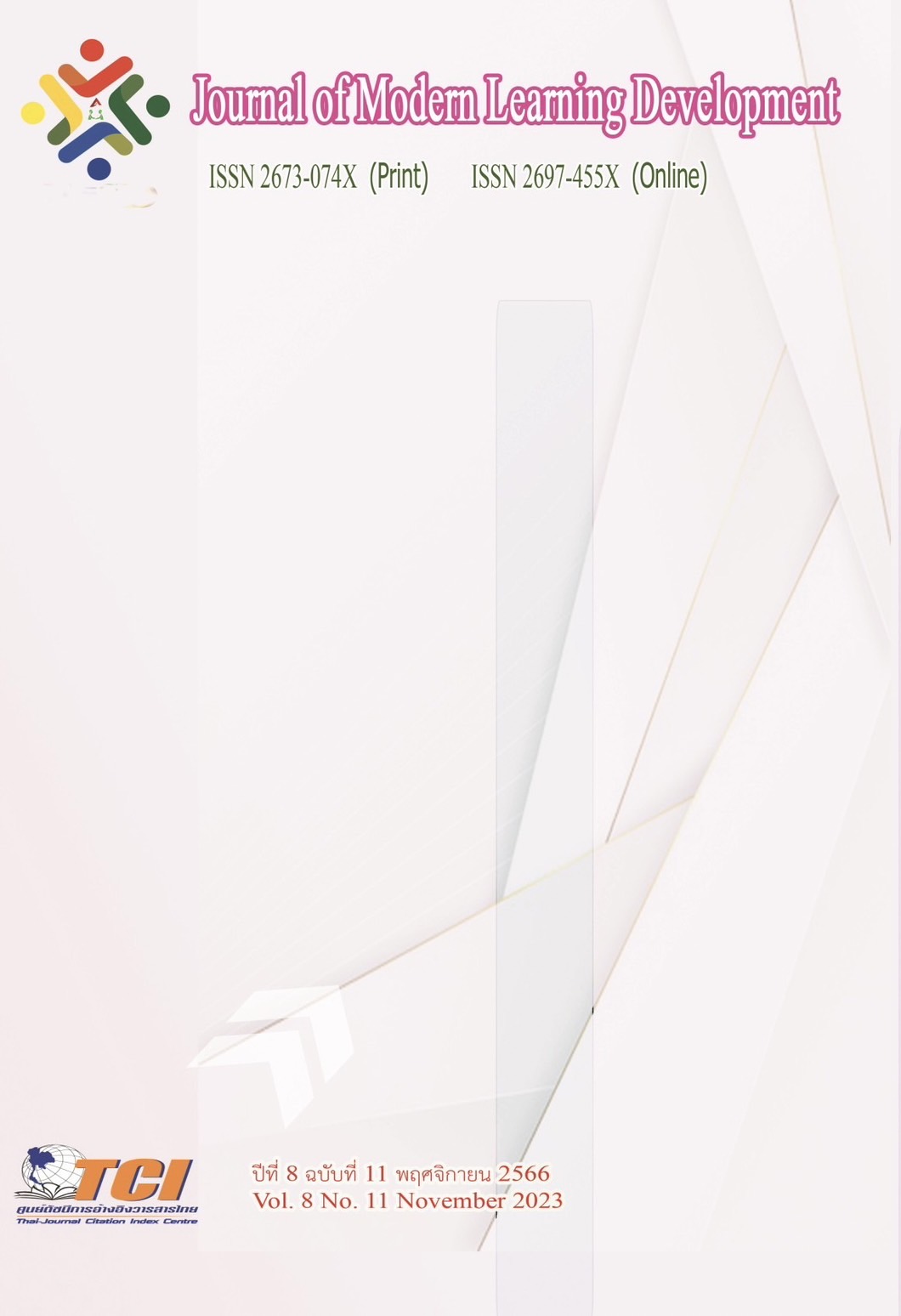Review of the impact of executive team characteristics on corporate performance
Main Article Content
Abstract
As an important issue of enterprise concern, enterprise performance is related to the survival and development of enterprises. How to improve enterprise performance in a highly competitive environment has always been a constant concern of scholars. This paper defines the concept of executive team and enterprise performance, introduces the senior echelon theory, principal agent theory and stakeholders theory, and summarizes the relevant literature of executive team characteristics and enterprise performance research. Literature review shows that in the existing research, many scholars only studied the executive team characteristics, dual innovation, institutional investors, ESG performance influence on enterprise performance, few scholars will study several into the same system, about the executive team characteristics, dual innovation, institutional investors, ESG performance research on the depth and breadth are lacking.
Article Details
References
Adams R, Almeida H.,& Ferreira D.(2009).Understanding the relationship between founder–CEOs and firmperformance .Journal of Empirical Finance. 16 (1), 136-150.
Bantel,K.A.,&Jackson,S.E.(1989).Top Management and Innovation in Banking: Does the Composition of the Top Team Make a Difference. Strategic Management Journal .10,107-124
Boeker,W.(1997).Strategic change: The influence of managerial characteristics and organizational growth. Academy of Management Journal , 40 (1), 152-170.
Carpenter, M.A., Geletkanycz, M.A., & Sanders, W.G.(2004).Upper echelons research revisited: Antecedents, elements, and consequences of top management team composition. Journal of management. 30 (6), 749-778.
Cristian ,L.D.,&David,G.R.(2012).Does female representation in top management improve firm performance?A panel data investigation. Strategic Management Journal . 33 (9), 1072-1089.
Croson,R.&Gneezy,U.(2009).“Gender Differences in Preferences.”Journal of Economic Literature. 47,448 - 474.
Donaldson,T.&Preston,L.(1995).The stakeholder theory of the corporation: Concepts, evidence,and implications. Academy of Management Review. 20, 65-91.
Eisenhardt,K.M, & Schoonhoven,C.B. (1990). Organizational growth: Linking founding team, strategy, environment, and growth among US semiconductor ventures, 1978-1988. Administrative science quarterly , 504-529.
Freeman,R.E. (1984). Strategic management:A stakeholder approach. Boston: Pitman.
Gu Jie, & Wang Yuqin. (2015). Research on the heterogeneity of human capital and corporate performance of senior management teams —— Based on the data of high-tech listed companies. Accounting Communications, No.677(21):54-56+70. DOI: 10. 16144/ j.cnki.issn1002-8072.2015.21.014.
Hambrick,D.C., &Mason, P.A. (1984). Upper echelons: The organization as a reflection of its top managers. Academy of Management Review . 9 (2), 193-206.
Hambrick,D.C.,Cho,T.S.,&Chen,M.J. (1996). The Influence of Top Management Team Heterogeneity on Firms' Competitive Moves. Administrative Science Quarterly. 41 (4), 659-684.
Jensen, M.C., & Meckling ,W.H. (1976). Theory of the firm: Managerial behavior, agency costs and ownership structure. Journal of financial economics. 3 (4), 305-360.
Khan,W.A., & Vieito, J.P.. (2013). CEO Gender and Firm Performance. Journal of Economics and Business. (67), 55-66.
Li Yinxiang, Shen Kangjie & Zhu Zhe. (2022). Executive characteristics and corporate performance: an overview and outlook. Friends of the Accounting. (07), 53-58.
Lian Bing, & Xu Xiaoli.(2015). Research on the relationship between the age and gender of senior executives of listed companies and corporate performance. Shang, (23), 54 + 33.
Lin Jianbin. (2014). Empirical study on the gender of senior executives and the financial performance of listed companies. developmental research, No. 337 (09), 54-59.
Lin Runhui, Li Fei, Gui Yuan, Li Ya & Li Na. (2019). Enterprise senior management team influence cross-border merger and acquisition model selection study —— feature drive or role. Science and Science and Technology Management. (07), 88-104.
Liu Xihua, Wang Han & Zheng Lei.(2015). Research on the relationship between the background characteristics of senior executives and enterprise performance of listed companies in Shandong Province. Journal of Qingdao University (Natural Science Edition). 28 (04), 80-86.
Miller,D.(1991).“Stale in the Saddle: CEO Tenure and The Match Between Organization and Environment”,Management Science. 78 ( 1) ,34-53.
Pfeffer,J. (1983). Organizational demography. Research in Organizational Behavior. (5), 299-357.
Smith, W.K., & Tushman, M.L. (2005). Managing Strategic Contradictions: A Top Management Model for Managing Innovation Streams .Organization Science. 16 (5), 522-536.
Tajfel, H. (1982). Social psychology of intergroup relations. Annual review of psychology. 33 (1), 1-39.
Tihanyi, L., Ellstrand, A.E, & Daily, C.M. (2000). Composition of the top management team and firminternational diversification. Journal of Management. 26 (6), 1157-1177.
Weinzimmer, L.G.,Iii, E.U.,&Nystrom,M.B. (2003). Relatingmarketing expertise on the top management team and strategic market aggressiveness to financial performance and shareholder value,Journal of Strategic Marketing. 11 ( 2 ), 133 -159.
Wiersema,M.F.&Bantel,K.A.(1992).Top Management Team Demography and Corporate Strategic Change. Academy of Management Journal. 35 (1), 91-121.
Yao Zhenhua, & Sun Haifa. (2011). Demographic characteristics and organizational performance of senior executive teams: an empirical study based on small and medium-sized private enterprises. Scientific and technological management research. (12), 126-130.
Yue Shangzhi, Yan Peng, & Ren Qiuzhen. (2017). Analysis of the impact of corporate executive background characteristics on the performance of corporate mergers and acquisitions —— Empirical study based on Shanghai and Shenzhen A-shares. Accounting Communications, No.762(34):21-25. DOI: 10. 16144 /j.cnki.issn1002-8072. 2017. 34. 006.
Zenger, T.R., Lawrence, B.S.(1989).Organizational demography: The differential effects of age and tenure distributions on technical communication. Academy of Management journal. 32 (2), 353-376.


